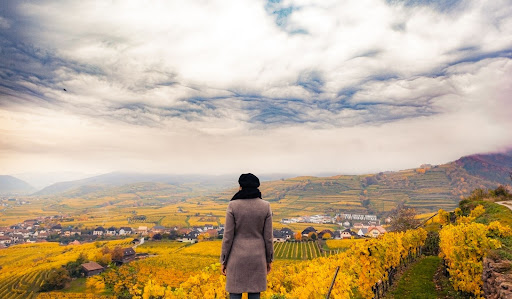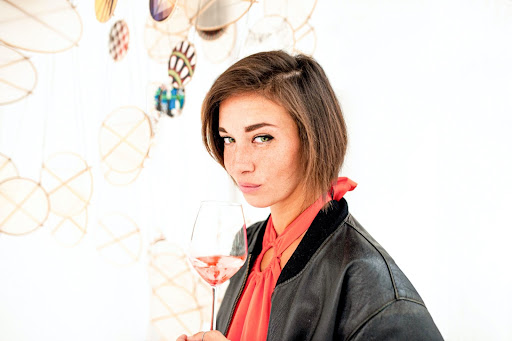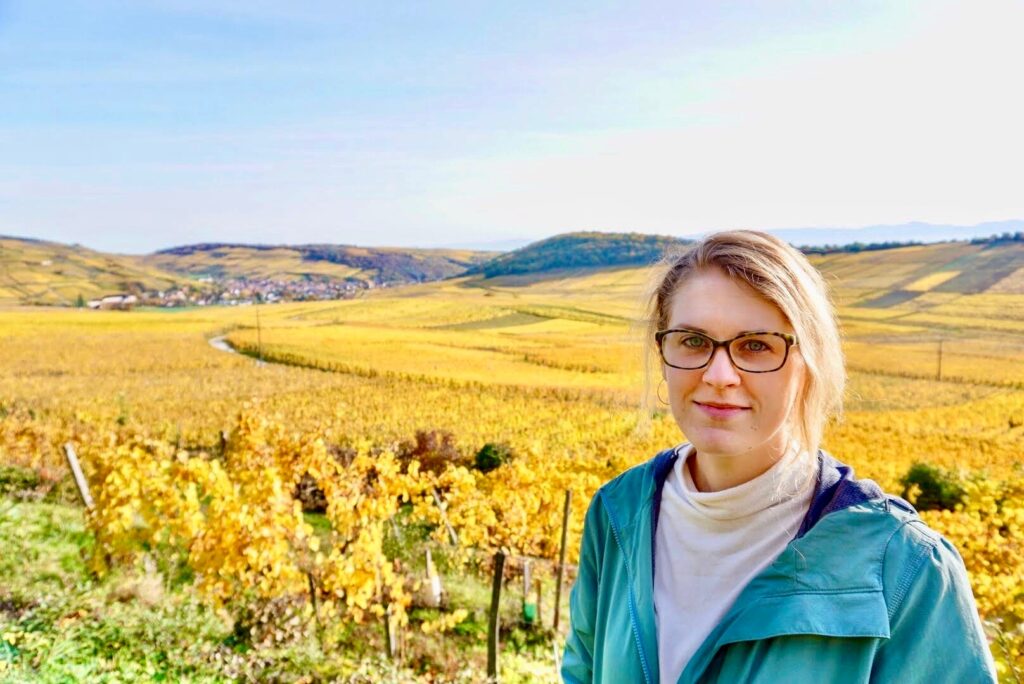
This year, wine trends are expected to veer towards lighter, fresher, and funkier styles. Call it supply chain issues forcing our hand away from the classics, or call it our need to shake up another year of this pandemic. Whatever the reason may be, wine educators, sommeliers, and consumers are expanding their palates in 2022. Up-and-coming wine regions are entering the mainstream wine dialogue, funky grapes are the norm, and the weirder the wine container, the better. However you find your wine tastes evolving this year, there’s something for everyone.
Wine Education World
Orange wines
Orange wines, oh, orange wines. The perplexing trend of the last few years is entering the wine education world’s agenda with full force in 2022. Perhaps wine educators have decided that if this thing is here to stay, they might as well educate consumers properly before they continue the insidious rumor that all orange wines are natural. Take Eric Asimov, the wine critic for The New York Times and faithful leader of The Wine School. Orange wines have become the latest focus of his wine column, as he has tried to enlighten consumers that this style is “defined not by area or grapes, but by production technique. That leaves plenty of room for differences and for further exploration.” Curious about orange wines? Try these two:
Progetto Calcarius Nù Litr Orange ($29.99) – A beautiful, radiant orange color, with aromas of camomile, white flowers, and honey.
COS Pithos Bianco ($34.95) – A more tannic example of orange wine, but still energetic, fresh, and floral.

Virginia wines
They say Virginia is for lovers. Over the last five years or so, it’s become apparent that Virginia is also for wine lovers. Wine Folly, one of the world’s best wine education websites, recently declared on their Instagram account that Virginia is one of “America’s most underrated wine regions.” Thanks to its warm, humid climate that has been likened to Bordeaux’s, it’s no surprise that Cabernet Franc, Merlot, and Petit Verdot do well here. Other varieties on the rise in Virginia include Viognier and Petit Manseng. Here are some to try:
Pollak Vineyards Meritage ($45) – Made in a classic Bordeaux style from Cabernet Franc, Merlot, and Petit Verdot, and showing flavors of black currant, black cherry, and leather.
Barboursville Vineyards Viognier ($22) – No malolactic fermentation or no oak here. Lees aging for 8-10 months in stainless steel gives this floral beauty a concentrated backbone of pear, citrus, and herbs.
Sommelier World
Chilled Light Reds
Chilled light reds like Gamay, Lambrusco, and Pinot Noir from cool climates are increasingly showing up on restaurant menus. Somms appreciate these quaffable wines for their food-friendliness. Lighter bodied reds with low tannins lend themselves well to the lighter fare that we tend to see pop onto restaurant menus around the springtime, like vegetable risottos and salmon. Plus, serving lighter bodied reds slightly chilled as the weather gets warmer is a new and exciting alternative for many wine consumers. Try these:
Negri La Giara Lambardi Lambrusco ($9.99): A light, sparkling red wine with dark fruit notes. Perfect for grilled meats or pizza – or grilled pizza!
Domaine Ostertag Les Jardins Pinot Noir 2019 ($36.99): This wine has notes of strawberry and cherry, and is a perfect example of great, easy drinking Alsatian Pinot Noir.
Chenin Blanc
It is within a sommelier’s nature to seek out food friendly wines that compliment the food menus at their restaurants. It doesn’t come as a surprise, then, that somms love Chenin Blanc. This is the ultimate food wine. Its diversity in styles, from sparkling to crisp and dry to sweet and luscious, there’s a Chenin for all foods. Its backbone of acidity makes drier styles particularly well suited to cut through the fat of fried foods. Helen Johannesen, owner and lead sommelier at Helen’s Wines in Los Angeles, wrote in her newsletter that Chenin Blanc makes you “want to jump in a cold river on a hot day.” Here are two to try:
Face B, Pif Paf, Blanquette de Limoux, Mauzac/Chenin Blanc ($36): While this wine comes from Languedoc in the south of France, it’s made in the méthode champenoise. Indigenous yeasts carry out the fermentation of this organic sparkling wine.
Agnes et Rene Mosse, Vin de France, Anjou, Chenin Blanc, 2020 ($38): While this wine is made in Anjou (of the Loire Valley), the producer chose to declassify it as a Vin de France. Strong texture and savoriness make this a must-try.
Logis de Bray Anjou Blanc ($12.99): Also made in Anjou, this Chenin has a fruity nose with notes of white flowers, hay, and honey. It’s a tasty and affordable way to try Chenin.
Grüner Veltliner
This Austrian white grape is still getting a lot of love. Although it began trending many years ago, Sommeliers continue to spread the word about this grape for its striking color and biting acidity, which makes it a perfect match for rich dishes. In a VinePair article polling nine sommeliers on the most underrated wines in 2022, three of them answered Grüner. “Although many people are aware of Grüner Veltliner, many people still have not the slightest idea of how delicious this variety truly can be,” states Ray Sholes, the sommelier at Michael’s Genuine Food and Drink in Miami. From light, zippy styles to wines that have been aged in oak, there’s a Grüner for everyone. Try these:
Weingut Knoll Loibner Grüner Veltliner Federspiel ($30.50): White peach, nectarine, and citrus on the nose, with a hint of white pepper. Perfect for fatty white fish.
Manni Nössing Grüner Veltliner ($29): This is an oaked style of Grüner that consumers rarely come across. This one has intriguing salinity and spice.
Consumer World
Alternative-Style Canned Wines
There is a new wave of wine influencers on social media who are pushing the boundaries of what wine “should” look like. Last year saw significant strides in canned wines, and this year, sub-categories within the canned wine umbrella will start to make an appearance. According to Wine Intelligence, “wine in a portable, single serve format, with a low-alcohol formulation that turns it from wine to a wine-based sparkling drink” will be on the rise in 2022. Here are some alternative-style canned wines to try this year:
Cool Cat Citrus Wine Spritzer ($15.99/ 4 pack): Pinot Grigio with natural citrus flavors, no gluten, only 6.9% ABV, and just 2 grams of sugar.
Underwood the Spritz Strawberry Daydream ($15/ 6 pack): Underwood is known for being one of the first companies to put wines in cans. Now, they’re expanding to the spritz realm. This one is made with rosé wine and strawberry brandy. At just 5% ABV, they’re crushable.

Rosé All Day (And All Year)
While the cooler months tend to make us crave a wine with more body and oomph, rosé wine consumption is predicted to rise year-round. Callum Jeffrey of Le Du Wines in New York attributes this to consumers’ desires for more “crushable” wines, and the simultaneous rise of light-bodied reds. Rosé appears to be the drink of choice for people who can’t get into the low ABV or “light wine” wine game. On the low end of the alcohol spectrum already, rosé – and particularly Provence rosé – checks the box on light-bodied, fruity, and fresh. If you’re looking to get on the rosé train, try these:
Close Sainte Magdeleine Côtes de Provence Rosé ($29) – Sunshine in a glass. Notes of strawberry and lemon with a touch of sea salt.
Domaine de la Tour du Bon Bandol Rosé ($35) – A light, almost translucent rosé with spice, fruit, and herbal complexity. An excellent Provence rosé.
Domaine Belambree Coteaux d’Aix-en-Provence ‘Les Ephemeres’ Rosé 2021 ($11.99) – A top seller at the Brix Wine Shop‘s annual Rosé Gala on the Lower East Side of Manhattan, this easy to drink Provençal rosé is bright and dry with notes of the sea and red berries.
 Charlotte is a Master of Science candidate in Wine and Vineyard Sciences in Bordeaux, France. Her passion for wine developed thanks to a bartending gig at a little French wine bar in Washington, DC. Eventually, she quit her desk job to manage the wine bar full time. Hailing from Northern Vermont, she is fond of outdoor hockey rinks, local ski hills, and farm-to-table food and drink.
Charlotte is a Master of Science candidate in Wine and Vineyard Sciences in Bordeaux, France. Her passion for wine developed thanks to a bartending gig at a little French wine bar in Washington, DC. Eventually, she quit her desk job to manage the wine bar full time. Hailing from Northern Vermont, she is fond of outdoor hockey rinks, local ski hills, and farm-to-table food and drink.
